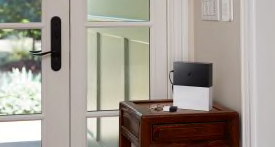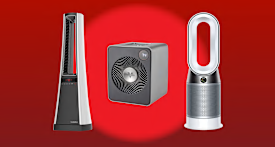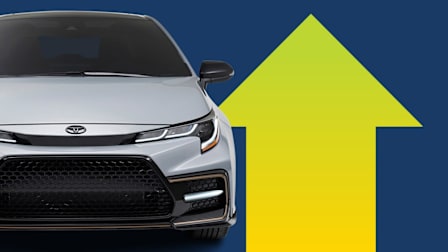Expert Tips on How to Inspect a Used Car
A careful evaluation will help you steer clear of hidden problems

Finding a trouble-free used car has nothing to do with luck and everything to do with applying good research and investigative skills. Knowing how to spot potential problems and determining how reliable a used vehicle is can save you from expensive automotive headaches down the road. The following advice can help you to avoid a lemon and find a good value.
Ask the Right Questions
Whether you are dealing with a private seller or a used-car dealer, asking these basic questions can help you decide whether the vehicle is worth the trip to inspect it closer.
How many miles does it have? If the mileage is higher than 20,000 per year or lower than 5,000, ask why. A high-mileage car used on a long highway commute may have less wear than if it did a lot of short trips or stop-and-go driving. Still, take any “these were all highway miles” claim with a grain of salt. Also, while low mileage is nice, it’s no guarantee of gentle care.
How is it equipped? Whether they’re listed in the ad or not, ask about key features: transmission type, safety equipment, audio system, cruise control, power seats, Bluetooth, rear entertainment screens, backup camera, and navigation. Double-checking could produce some telling comments.
What’s the car’s condition? Start broad and don’t interrupt. The seller could bring up something you wouldn’t have thought to ask about.
How about the body and interior? If these areas weren’t covered before, ask about them specifically.
Has it been in a crash? If yes, ask about the extent of the damage, the cost of repairs, and who did the work. Don’t worry about minor scrapes, but think twice about a car that has been in a serious collision. Verify with a vehicle history report, such as from Carfax.
Do you have service records? You want a car that has been well cared for. It should have had maintenance done at the manufacturer-specified intervals. Ask for receipts for any parts that have been replaced. Repair-shop receipts normally note the odometer reading, helping you verify the history.
Are there open recalls? Ask whether any safety-recall work needs to be done. Dealerships can access the recall history, but with the VIN, you can check the manufacturer’s website or the National Highway Traffic Safety Administration website. Note the mileage when work was performed. To learn more, check CR’s Car Recall Tracker.
Questions for Private Sellers
Have you owned it since it was new? You want to be able to piece together the car’s service history. Be skeptical if the owner claims to have done the maintenance but can’t produce any receipts, or if the car has changed hands multiple times in a few years. A vehicle history report can shed more light on those items.
Are you the person who drove it the most? Ideally, you want to meet the car’s principal driver, or drivers, to see whether they strike you as responsible.
Why are you selling the car? Look for a plausible explanation rather than an interesting story. If the answer sounds evasive, be wary.
Get a Repair Estimate for Your Car
CR can help you figure out how much a repair will cost in your ZIP code.
Read the Window Sticker
The Federal Trade Commission requires car dealers to post a Buyers Guide in every used vehicle offered for sale. Usually attached to a window, it must contain certain information, including whether the vehicle is being sold “as is” or with a warranty, and what percentage of repair costs (if any) the dealer is obligated to pay. The guide information overrides any contrary provisions in your sales contract. In other words, if the guide says that the vehicle is covered by a warranty, the dealer must honor that warranty. If any changes in coverage are negotiated, the guide must be altered to reflect them before the sale.
If a sale is designated “as is,” it means the dealer makes no guarantees as to the condition of the vehicle, so any problems that arise after you have made the purchase will be your responsibility. Many states do not allow as-is sales on vehicles selling for more than a certain price.
Inspect the Vehicle Carefully
No matter whom you buy from, always look over the vehicle thoroughly. Dress in clothes that you don’t mind getting dirty and give the car a good going-over.
Do your inspection in daylight on a dry day, because floodlights and rain can make cars look shiny and hide body defects. The car should be parked on a level surface and shouldn’t have been driven for at least an hour before you start your inspection.
Exterior
Body condition: Check each panel and the roof, looking for scratches, dents, and rust. Watch out for misaligned panels or large gaps, which can indicate either sloppy assembly at the factory or shoddy repair work. The paint color and finish should be the same on every body panel.
If you think the body or other parts of the car have been repainted, there may be paint on the rubber seals around the hood and trunk lid.
Rust is a cause for concern, so check the body for blistered paint or visible rust. Check the wheel wells, panels—beneath the doors, and door bottoms.
Open and close each door, the hood, and the trunk. Gently lift and let go of each door, particularly the driver’s door. If it seems loose on its hinges, the car has seen hard or long use. Inspect rubber seals for tearing or rot.
Glass: Look carefully at the glass to make sure there are no cracks or large, pocked areas. A small stone chip might not be cause for alarm, though you should bring it up in negotiations. But cracks in the windshield will worsen and lead to a costly repair.
Suspension: Walk around the car to see whether it’s sitting level. Push down on each corner. If the shock absorbers are in good shape, the car should rebound just once, not bounce up and down. Grab the top of each front tire and tug it back and forth. If you feel play in it or hear a clunking sound, the wheel bearings or suspension joints may be shot.
Lights and lenses: Have a friend confirm that all lights are working. Make sure all light lenses and reflectors are intact and not cracked, fogged with moisture, or missing.
Tires: You can tell a lot from the tires. A car with less than 20,000 miles, for example, should probably still have its original tires. Be wary of a low-mileage car with new tires, and check to make sure all four tires are the same. If there are different branded tires on the car, ask why they have been replaced.
Treadwear should be even across the width of the tread, and the same on the tires on the left and right sides of the car. Ask whether the tires have been regularly rotated. If not, the wear is usually more severe on the drive wheels.
Aggressive drivers tend to put heavy wear on the outside shoulder of the front tires, at the edge of the sidewall. If that area shows heavier wear, assume that the car has been driven hard.
Tires that have been driven while overinflated tend to wear more in the middle than on the sides. Chronically underinflated tires show more wear on the sides. Cupped tires—those worn unevenly along the tread’s circumference—may be a sign of a problem with the steering, suspension, or brakes.
Tires must have at least 1/16 inch of tread to be legal. Check the tread depth with a tread-depth tool—available at auto parts stores—or a quarter. Insert the quarter into the tread groove, with Washington’s head down. If you can see the top of his head, the tire should be replaced.
Examine the sidewalls for scuffing, cracks, or bulges, and look for dents or cracks on each wheel. Check to make sure the spare is in good shape and the proper jack and lug wrench are present.
Interior
The inside of a car may matter the most to you because that’s where you’ll spend the majority of the time while you own the car. So take your time and give it a thorough once-over.
Odor: When you first open the car door, sniff the interior. A musty, moldy, or mildewy smell could indicate water leaks. Remove the floor mats and check for wet spots on the carpet. An acrid smell may indicate that the car was used by a smoker. Check the lighter and ashtray (if so equipped) for evidence. Some odors, such as mold and smoke, can be very hard to get rid of.
Seats: Try out all the seats, even if you probably won’t sit in the rear. Upholstery shouldn’t be ripped or badly worn, particularly in a car with low mileage. Try all the seat adjustments to make sure that they work properly and that you can find a good driving position. Make sure every adjustment works on both the driver and passenger seats.
Don’t forget about the back seats! Even if you won’t be sitting there regularly, try out each seating position to look for lumps in the padding or uneven support. If the seats can be folded down, make sure the lowering mechanism works.
Pedals: The rubber on the brake, clutch, and gas pedals indicate how the car has been used. A car with low miles shouldn’t show much wear. Pedal rubber that’s worn through in spots—or brand new—indicates that the car has been driven a lot.
Instruments and controls: Turn on the ignition switch without starting the engine. You should make sure all the warning lights—including the check engine light—illuminate for a few seconds and go off when you start the engine. Note whether the engine is hard to start when cold and if it idles smoothly. Then try out every switch, button, and lever.
With the engine running, turn on the heater full blast to see how hot it gets, and how quickly. Then, switch on the air conditioning and make sure it quickly blows cold.
Sound system: Check reception on AM, FM, and satellite radio. If the car is old enough to still have a CD player, try loading and ejecting a disc. Take your smartphone or MP3 player with you, and pair it via Bluetooth or plug it in. Look to see if the car has wired or wireless connectivity to Android Auto and Apple CarPlay.
Some older vehicles may have software compatibility issues connecting to newer phones. Ask a private seller or dealer if there are software updates to address the problem, or check online
Roof: Check the headliner and roof trim for stains or sags to see whether water is leaking through ill-fitting doors or windows. Check to see that the sunroof or moonroof opens and closes properly and seals well when shut. Inspect a convertible top for tears by shining a flashlight up into it.
Trunk: Use your nose as well as your eyes. Sniff and look for signs of water entry. See whether the carpeting feels wet or smells musty, and check the spare tire well for water or rust.
Under the Vehicle
If you can find where the vehicle is usually parked, look for marks from old puddles of gasoline, oil, coolant, or transmission fluid. Clear water that drips from under the car on a hot day is probably just water condensed from the air conditioner.
Tailpipe: Feel it for residue. If it’s black and greasy, it means burnt oil. Tailpipe smudge should be dry and dark gray. Though some rust is normal, heavy rust could mean the vehicle needs a new exhaust system.
Underneath: If the vehicle is high enough to slide under, you may be able to do some basic checks. Spread an old blanket on the ground and look under the engine with a flashlight. If you see oil drips, oily leaks, or green or red fluid on the engine or the pavement beneath the car, it’s not a good sign.
Examine the constant-velocity-joint boots, which are the round, black-rubber bellows at the ends of the axle shafts. If they are split and leaking grease, assume that the car has bad CV joints, another costly repair.
Structural components with kinks and large dents in the floor pan or fuel tank all indicate a past accident. Welding on the frame suggests that a section might have been replaced or cut out to perform repair work. Fresh undercoating may hide recent structural repairs.
Take It to Your Mechanic
Before you close the deal, have the car scrutinized by a repair shop that routinely does diagnostic work. A dealer should have no problem lending you the car to have it inspected as long as you leave identification. If a salesperson tells you that an independent inspection is not necessary because the dealership has already done it, insist on having your mechanic look at it. If a private seller is reluctant to let you drive the car to a shop, offer to follow the seller to the inspection shop.
A thorough diagnosis should cost around $100 to $150, but check the price in advance. Ask the mechanic for a written report detailing the car’s condition, noting any problems found and the cost to repair them. You can then use the report when you begin to negotiate with the seller.
If you don’t know of any repair shops, you can ask a local auto parts store for the name of a good shop. If you can’t get referrals, look for a nationwide used car inspection service, such as SGS or Carchex, or at the Car Care Council, an organization supported by the auto aftermarket industry. Note that there are no performance criteria for shops listed on the site.
To check for complaints about any shops, research the companies on the Better Business Bureau’s website. Members of the American Automobile Association (AAA) can use one of its recommended facilities.
If you’re going to a shop for the first time, look for certificates or window decals from AAA or the National Institute for Automotive Service Excellence (ASE). AAA-certified garages must meet certain quality standards. The ASE grants certificates to mechanics who pass exams in any of eight areas of expertise. The ASE does not certify shops as a whole, but if 75 percent of the employees are ASE-certified, the shop can carry the seal.




















